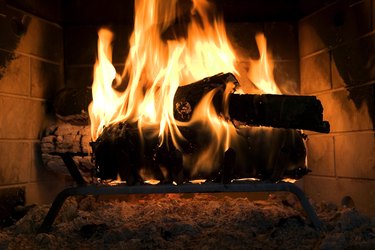
Properly insulating gas fireplaces is critical to preventing cold air penetration, which can lead to moisture buildup and mold growth when the cold air meets the warmth of the fireplace. However, It is critical to follow the fireplace manufacturer's guidelines and some general rules when doing the insulating to prevent creating a fire hazard.
Read the Fireplace Instructions
Video of the Day
If the fireplace is new, consult the instruction manual that came with it. The manual will address insulation — specifically, the types that are acceptable and any areas around the fireplace that should not be insulated. If the fireplace is existing construction, it may be necessary to contact the manufacturer or a licensed fireplace installer in your area.
Video of the Day
Select an Insulation
If the fireplace is suitable for insulation, select one that is noncombustible. A variety of products are available at home improvement stores. Insulation comes in several styles, including treated, nonpapered fiberglass insulation and unique products such as fireproof insulation board. As long as it meets the fireplace manufacturer's guidelines, select a product that will be the easiest to install and fits your project budget.
Installation
It is important to follow the fireplace manufacturer's guidelines exactly when installing the insulation. Even though the insulation is not combustible, it is still important to keep it from blocking vents and air intakes on the fireplace. This can create dangerous buildups of off-gases from the fireplace and can prevent proper operation of the fireplace if airflow into the fixture is reduced.
Other Insulation Considerations
Gas fireplaces require venting to outdoors. Depending on the home's construction and fireplace placement, these vents may run directly through an outside wall or up through an attic. In either case, the manufacturer's instructions must be followed regarding insulation contact with the vent pipe as well. The vent pipe carries extremely hot air and, if it comes in contact with the wrong type of insulation, it can start a fire.